Who knew that one day the words “New York City subway” and “romantic” would be strung in the same sentence? Hidden inside the second story of a discrete narrow building near Huashan 1914 Creative Park in Taipei’s Zhongzheng District (中正區), B-Line by A Train is the ideal dining spot to bring a date after perusing art exhibitions or listening to a live indie band.
Inspired by the culture and design of the New York City subway, this fusion gastropub that opened last year is about as industrial-chic as it gets. The mood begins from outside the restaurant where a tiny orange door on the ground level marks the way up to the dining area. As patrons ascend the black metal staircase, it’s hard not to discern the musty wall along the stairwell which is covered entirely with a giant map of the New York City subway.
The main door on top of the staircase, made to resemble a high voltage bolt, opens into a pleasantly plush setting with intimately arranged fern-green sofas. The walls of the restaurant are made of grey bricks and marble, and lamps attached to dangling wires from the ceiling along with desk lamps at wooden tables provide dim lighting.
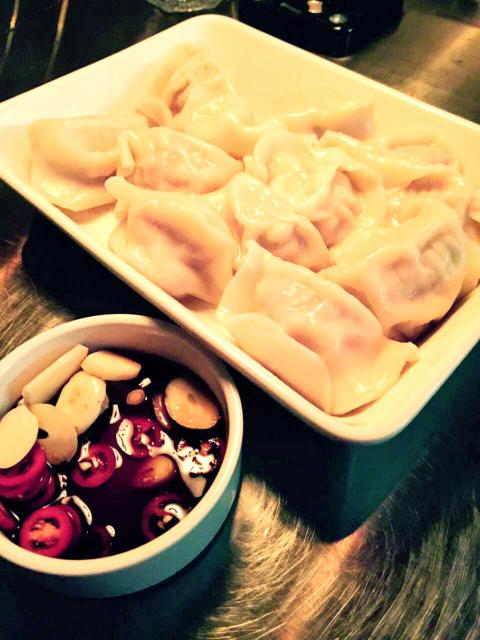
Photo courtesy of B-Line by A Train
Next to the entrance is the bar where good-looking young bartenders with smiles mix mojitos for chattering ladies. The bar’s design vaguely evokes a rattling tin can, which is essentially what the subway in New York is. Whiskey, wine and other delightful liquors are displayed against a red brick wall, conjuring a Prohibition-esque feel. A Lower East Side yuppie would feel right at home at B-Line by A Train, should he or she be transported to Taipei.
The food, on the other hand, is not very New York — if you’re craving a pastrami and pickle sandwich, you’ve come to the wrong gastropub. They do, however, have an impressive selection of family-style fusion eats that are a few notches classier than your average midnight pub food binge.
The Thai style beef short ribs salad (NT$340) is by far my favorite dish. Thin slices of beef are interspersed throughout a small sweet-spicy salad filled with cherry tomatoes, corn and onion. From presentation to taste, everything is tender and dainty, a far stretch from American-style short ribs.
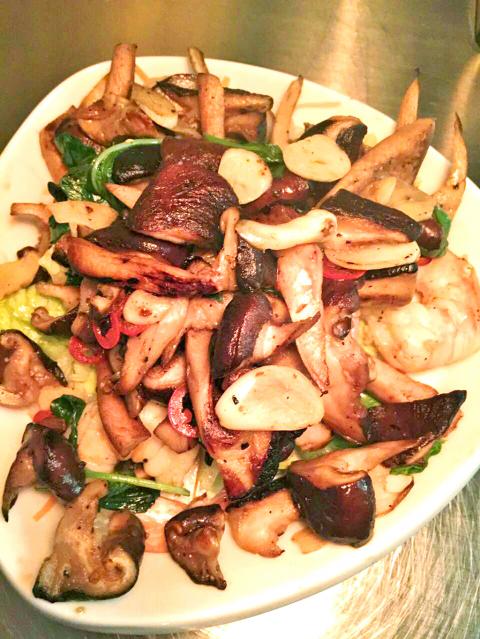
Photo courtesy of B-Line by A Train
A close contender is the stir-fried garlic mushrooms (NT$280). Sprinkled with pepper and chili, the mushrooms are delightfully succulent and spicy. The texture is light and chewy, while the garlic isn’t overpowering. This makes it a nice dish to nibble on and liven up the palate while sampling other food. The mushrooms pair well with B-Line by A Train’s sausage platter with seasonal vegetables (NT$350). The sausages are not so much the types you’ll find at Oktoberfest, but rather, they are sauteed with Southeast Asian herbs. In other words, less sauerkraut and more spice — though this is a fusion that syncs surprisingly well.
B-Line by A Train’s handmade dumplings (NT$220) could possibly rival those found in a legitimate dumpling shop. The pork and chives filling are tantalizingly juicy and the skin is springy. Shifting chef hats from Chinese to Italian, the truffle frittata (NT$280) was one dish that was not quite up to par with the rest. The truffle was only mildly discernable, hidden beneath too many layers of bland omelette. The frittata’s texture was a bit too soft and the outer layer a tad oily.
That being said, the real show-stealers at B-Line by A Train are its fine selection of beers and wines. A massive-sized Belgian Hoegaarden (NT$300) pairs well with almost all the food, its light wheat flavor helping to cleanse the palate between various small dishes.
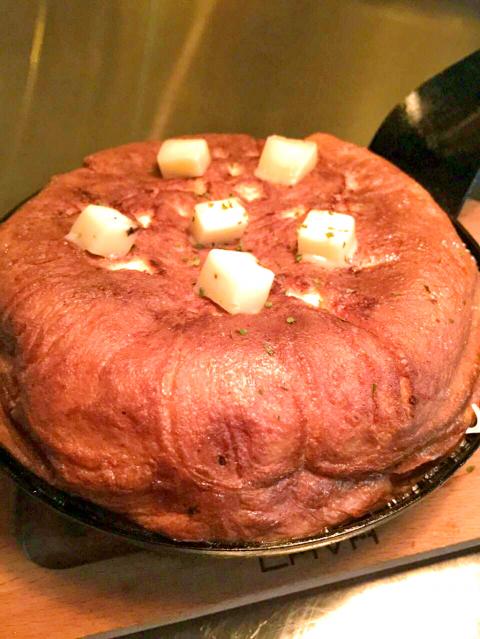
Photo courtesy of B-Line by A Train
B-Line by A Train may not serve pastrami and pickle sandwiches, but it nails New York to the bone by making multiple drinks Mondays seem suave. Never mind the bland frittatas — Taipei yuppies may finally have a decent late-night watering hole that isn’t a slinky, shiny Xinyi bar or conversely, the Taiwan-Beer-can-littered steps outside a 7-Eleven.
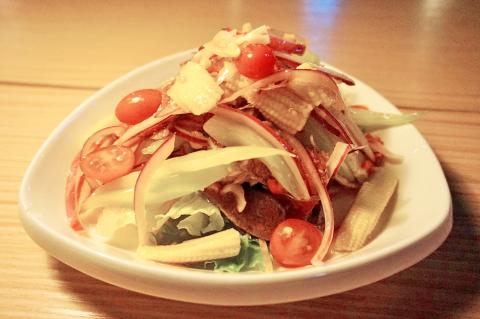
Photo: Dana Ter, Taipei Times
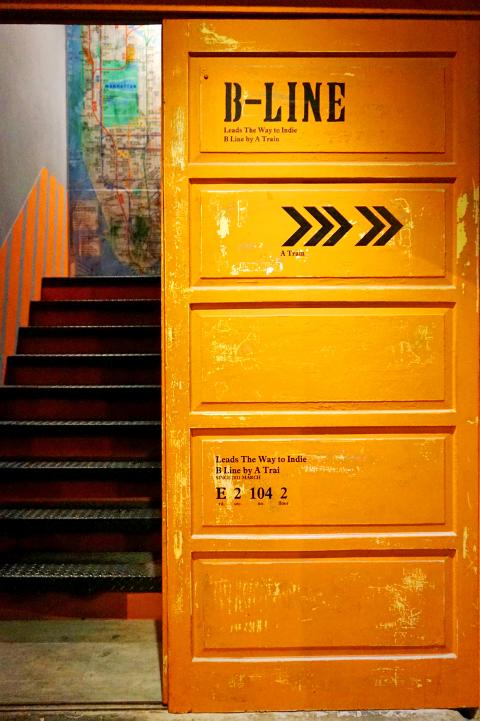
Photo: Dana Ter, Taipei Times

“Why does Taiwan identity decline?”a group of researchers lead by University of Nevada political scientist Austin Wang (王宏恩) asked in a recent paper. After all, it is not difficult to explain the rise in Taiwanese identity after the early 1990s. But no model predicted its decline during the 2016-2018 period, they say. After testing various alternative explanations, Wang et al argue that the fall-off in Taiwanese identity during that period is related to voter hedging based on the performance of the Democratic Progressive Party (DPP). Since the DPP is perceived as the guardian of Taiwan identity, when it performs well,

The Taiwan People’s Party (TPP) on May 18 held a rally in Taichung to mark the anniversary of President William Lai’s (賴清德) inauguration on May 20. The title of the rally could be loosely translated to “May 18 recall fraudulent goods” (518退貨ㄌㄨㄚˋ!). Unlike in English, where the terms are the same, “recall” (退貨) in this context refers to product recalls due to damaged, defective or fraudulent merchandise, not the political recalls (罷免) currently dominating the headlines. I attended the rally to determine if the impression was correct that the TPP under party Chairman Huang Kuo-Chang (黃國昌) had little of a

At Computex 2025, Nvidia CEO Jensen Huang (黃仁勳) urged the government to subsidize AI. “All schools in Taiwan must integrate AI into their curricula,” he declared. A few months earlier, he said, “If I were a student today, I’d immediately start using tools like ChatGPT, Gemini Pro and Grok to learn, write and accelerate my thinking.” Huang sees the AI-bullet train leaving the station. And as one of its drivers, he’s worried about youth not getting on board — bad for their careers, and bad for his workforce. As a semiconductor supply-chain powerhouse and AI hub wannabe, Taiwan is seeing

Jade Mountain (玉山) — Taiwan’s highest peak — is the ultimate goal for those attempting a through-hike of the Mountains to Sea National Greenway (山海圳國家綠道), and that’s precisely where we’re headed in this final installment of a quartet of articles covering the Greenway. Picking up the trail at the Tsou tribal villages of Dabang and Tefuye, it’s worth stocking up on provisions before setting off, since — aside from the scant offerings available on the mountain’s Dongpu Lodge (東埔山莊) and Paiyun Lodge’s (排雲山莊) meal service — there’s nowhere to get food from here on out. TEFUYE HISTORIC TRAIL The journey recommences with